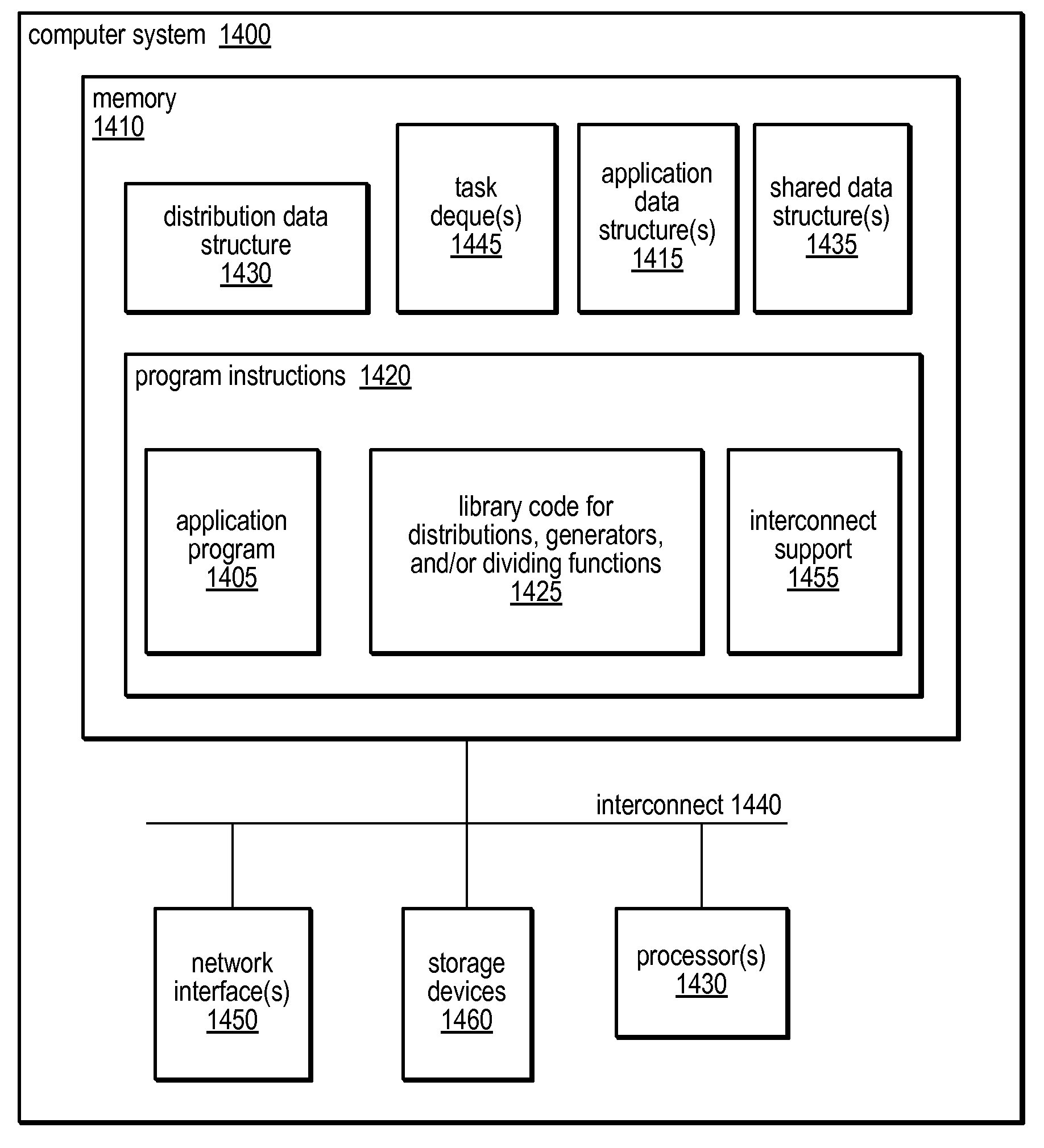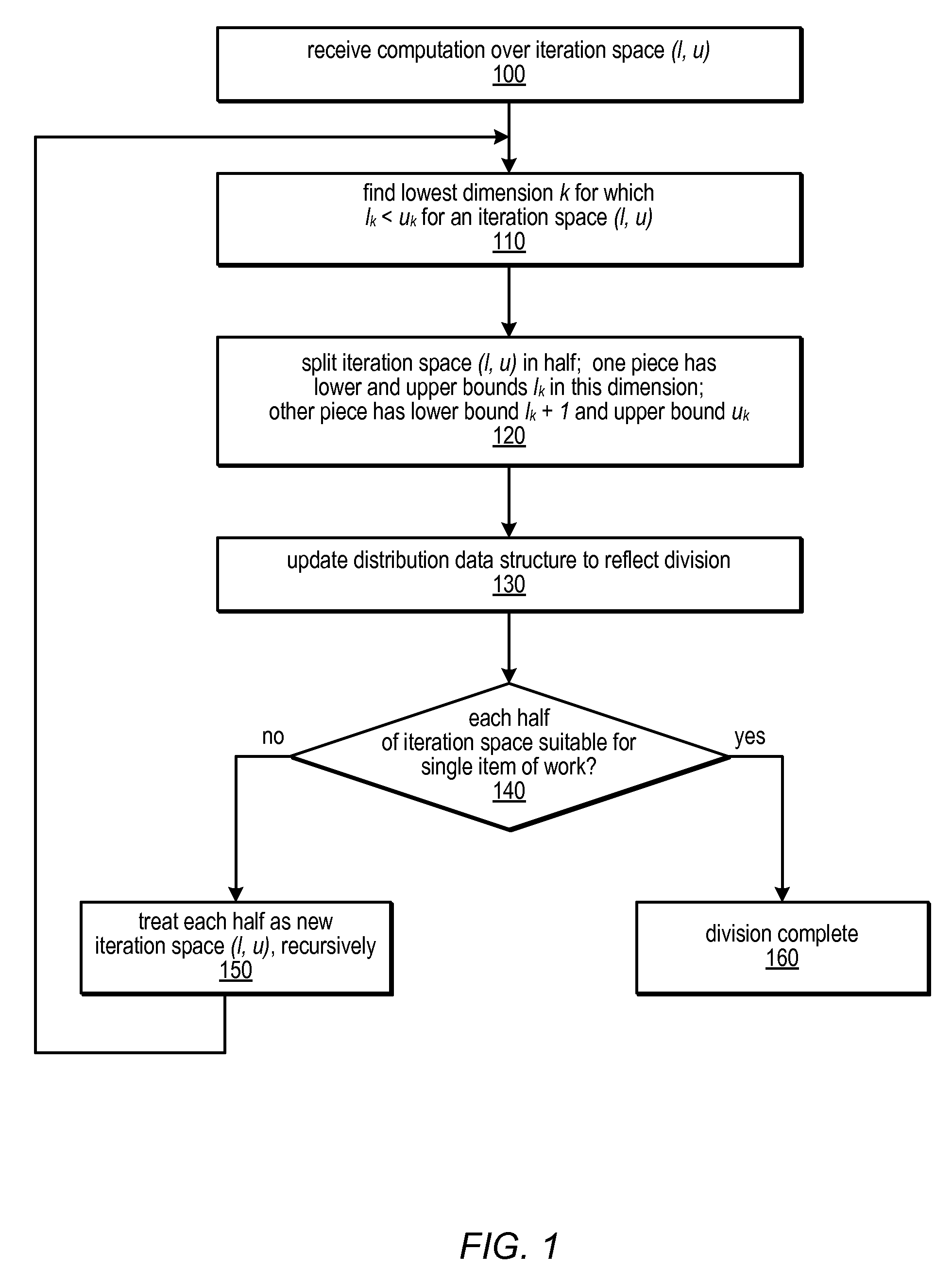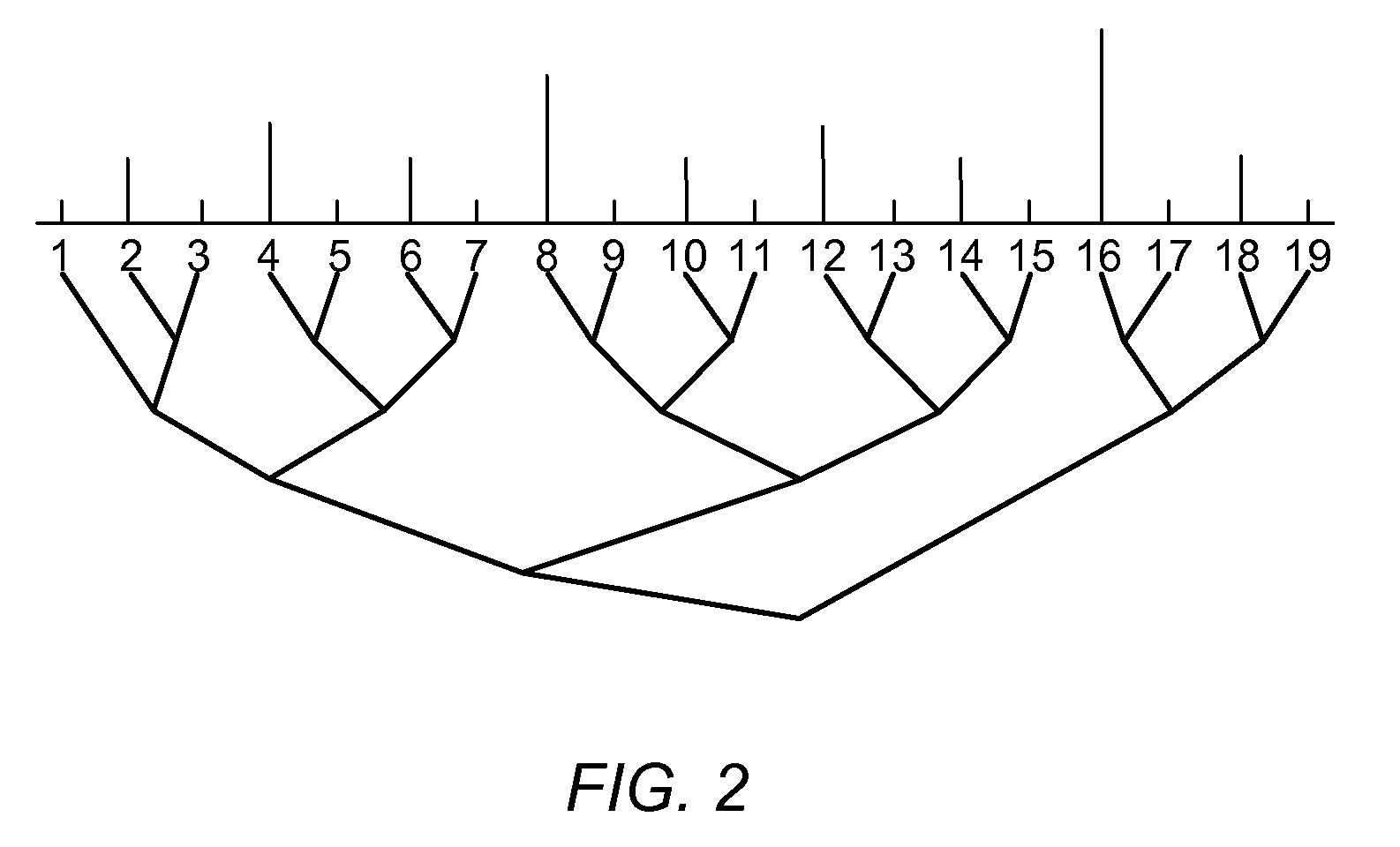Distribution Data Structures for Locality-Guided Work Stealing
a data structure and locality-guided work technology, applied in the field of distributed computing, can solve the problems of limiting performance, cost of communication in a large parallel machine, and current approaches that often fail
- Summary
- Abstract
- Description
- Claims
- Application Information
AI Technical Summary
Benefits of technology
Problems solved by technology
Method used
Image
Examples
Embodiment Construction
[0021]As described above, parallel programming may increasingly involve a tradeoff between structuring a program around its communication and expressing the problem naturally in the hope of obtaining a reasonably efficient code that is adaptable and easily maintained. In various embodiments, programs may be developed in the latter style, and a communication structure may be imposed only when performance requires it. For example, the Fortress programming language, an open-source programming language initially developed by Sun Microsystems, Inc., was designed with this goal in mind. Distribution data structures, as described herein, may be implemented by library functions and / or other programs written in the Fortress programming language, in some embodiments. In other embodiments, they may be implemented using other programming languages (e.g., with or without extensions).
[0022]Distribution data structures may in some embodiments provide mechanisms to minimize data movement by localiz...
PUM
 Login to View More
Login to View More Abstract
Description
Claims
Application Information
 Login to View More
Login to View More - R&D
- Intellectual Property
- Life Sciences
- Materials
- Tech Scout
- Unparalleled Data Quality
- Higher Quality Content
- 60% Fewer Hallucinations
Browse by: Latest US Patents, China's latest patents, Technical Efficacy Thesaurus, Application Domain, Technology Topic, Popular Technical Reports.
© 2025 PatSnap. All rights reserved.Legal|Privacy policy|Modern Slavery Act Transparency Statement|Sitemap|About US| Contact US: help@patsnap.com



